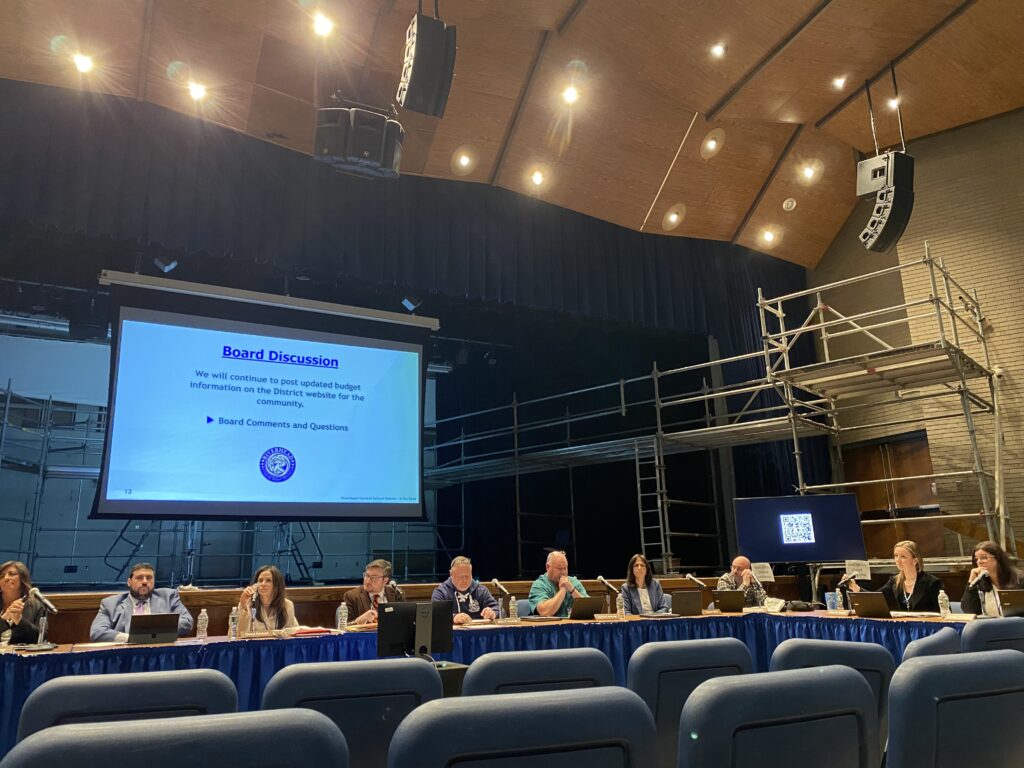Town sees breakthrough in battle for the beach

TIM GANNON FILE PHOTO
These signs are a bone of contention between the town, which wants them removed, and beachfront homeowners in Wading River, who say the signs accurately mark private property.
The dispute over who owns the Wading River beachfront to the east of the Riverhead Town beach off Creek Road took an interesting twist recently, when town officials claimed they had found evidence that this beach actually belongs to the town, and was listed as a town beach in tax maps prior to 1980.
This is the controversial section of beach on Long Island Sound where several homeowners erected “no trespassing” signs earlier this year, prompting a dispute with people who use four-wheel-drive vehicles, and with some town officials.
Riverhead Supervisor Sean Walter at one point this year said the town would order the signs removed by July 4, but he later relented and said he wanted to work with the homeowners to find a solution both sides could live with.
Riverhead Councilman George Gabrielsen, who was at a recent meeting with the homeowners when the town presented its findings, said, “Their jaws dropped when we showed them this.”
Town attorney Dawn Thomas said the town now believes the amount of beachfront land that belongs to the homeowners is far less than they claimed.
The property owners have maintained that their own deeds show that the beachfront land is their property as far north as the mean high water mark. And they say they’ve hired a surveying firm to determine where the mean high water mark is located, and that the “no trespassing” signs are slightly landward of that mark.
Jonathan Sinnreich, the attorney representing the homeowners, declined to comment on the town’s position.
Mr. Walter said he stills wants to work with the homeowners to find a solution that’s amicable to both sides, but he said the discovery of the beach’s being listed as a town beach on tax maps in the 1970s puts the town in a better negotiating position. He also said the town will request that the “no trespassing” signs be removed by Labor Day.
Mr. Walter said a title search conducted by the town found that the beach land in question was all owned by the same person in the 1930s but was taken by a bank in a foreclosure.
Sometime after that, it became a town beach, and was consistently labeled as a town beach on tax maps through the 1970s, he said. In the early 1980s or late 1970s, he said, some private land owners convinced the bank to give them title to the land through a quit claim deed, which doesn’t guarantee that the grantor was the owner of the land. Mr. Walter believes the listing of the land as a town beach carried more weight that the quit claim deed.
“Some property owners thought they were being clever, and they went to the bank and got a quit claim deed, which basically means the bank is saying, ‘We don’t know what we own here, but whatever we own, we’ll give to these property owners,’â” Mr. Walter said.
The supervisor said the area in question only covers the beach in front of about six to eight homes east of the town beach, which, ironically, is where the “no trespassing” signs are located.
“We’re going to try and come up with a mechanism to allow unfettered access to the public on this beach,” Mr. Walter said.








